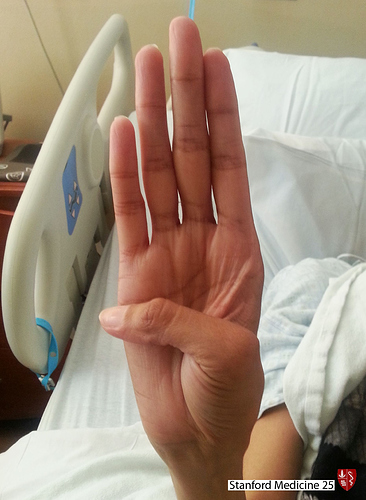Thanks for taking a crack at this!
This is what the descending side of this looks like, and this approach of being what we call “primary up 2wps” is specifically the variety of “2wps” we explore in Antigravity with players like Batio, McLaughlin, etc. So you’re not wrong. If the ascending side appears slightly different to you, you simply may be changing your arm position slightly, but it’s possible you’re not really changing the motions you are making. The camera angle is a little too close to determine that.
I know we film a lot of our stuff with the magnet, but if you don’t have one, a regular old tripod shot is the best method for regular use. Something like this:
If you point the headstock a little toward the phone, you can find a sweet spot where the fretting fingers don’t block the view and you can still see a little bit “down the strings”. As far as distance, keep the phone close enough to you that you can still make out the pick / string interaction, but wide enough to capture a little of what the hand / arm are doing too.
If you get another crack at this using a tripod setup that would be great. If you’re uploading directly from the phone, I know that sometimes bakes in the slow motion automatically, and you have no control over where it puts that. If that’s the case, play the phrase a few times so you can see what the flow of the normal-speed motion looks like before the slow motion kicks in.
Thanks again here, this is always a learning opportunity. What a world we live in!


 If I get a chance I’ll shoot some of this, but it’s the same mechanical approach just with fewer string changes. Ironically, the best way to practice this is probably to practice the pentatonic pattern, since the string changes come at you a lot faster!
If I get a chance I’ll shoot some of this, but it’s the same mechanical approach just with fewer string changes. Ironically, the best way to practice this is probably to practice the pentatonic pattern, since the string changes come at you a lot faster!
